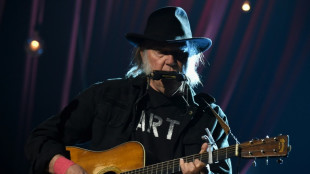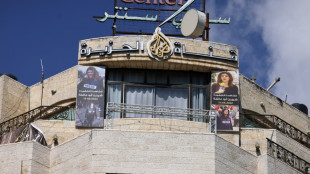
Painter Frank Auerbach, contemporary of Freud and Bacon, dies at 93

Frank Auerbach, who fled Nazi Germany as a child and became one of Britain's leading 20th-century artists alongside Lucian Freud and Francis Bacon, has died in London aged 93, his gallery announced on Tuesday.
"Frank Auerbach, one of the greatest painters of our age, died peacefully in the early hours of Monday 11 November at his home in London", Frankie Rossi Art Projects said.
Focusing on portraiture and quotidian cityscapes, the German-British artist was known for his artworks heavy with paint, created after repeatedly scraping the paint on his canvas and restarting until he was satisfied with his work.
He was the subject of a major retrospective exhibition at London's Hayward Gallery in 1978 and also represented Britain at the Venice Biennale in 1986, sharing the grand prize, the Golden Lion, with German artist Sigmar Polke.
"We have lost a dear friend and remarkable artist but take comfort knowing his voice will resonate for generations to come," said Geoffrey Parton, director of Frankie Rossi Art.
Born in Berlin in 1931, Auerbach came to Britain as a refugee in 1939. His parents were killed in the Auschwitz concentration camp three years later.
Excelling in the arts at a boarding school for Jewish refugee children, Auerbach went on to study at London's St Martin's School of Art and the Royal College of Art.
He was active in Soho's artists circles in the 1950s and 60s, friends with influential British figurative painters Lucian Freud, Francis Bacon and Michael Andrews.
Auerbach was the last artist alive from the group, who were each other's friends and rivals, sharing ideas, models and an "unfashionable" pursuit of figurative art.
The painters "were seeing a lot of each other in the 1950s and 1960s," Richard Calvocoressi, who curated an exhibition on their relationships told AFP at the gallery's opening in 2022.
"They, very unfashionably at the time, held out for figurative art... at a time when abstract art was all the fashion."
- 'Act of creation' -
Auerbach, a private artist, said in a 2014 interview with the Guardian newspaper that he felt as though he was "always trying to catch up".
"It's only very recently, because I have lived for such an unconscionably long time, that I have felt that I have managed what you might call a little oeuvre," he added.
Working from the same "cramped" studio since 1954, Auerbach was described as obsessive, living in Camden Town in north London for most of his life and revisiting the same city scenes he passed every day in his paintings.
During his career spanning seven decades, he constantly returned to the same models for his portraits as well.
One of them, Catherine Lampert, who was a curator and a sitter for him over 37 years described him as living in the "immediate present".
She told the local Hampstead & Highgate Express newspaper in 2015 that for Auerbach, it was "all about the act of creation and solving problems by instinct and surprise".
Auerbach continued to paint through the Covid-19 pandemic, and, when unable to access sitters, turned to self-portraiture.
When asked what motivated him, Lampert, who curated a retrospective of his work in 2015, said he was "looking forward to making a few more paintings and having an easy death".
F. Dumont--BTZ

 London
London

 Manchester
Manchester
 Glasgow
Glasgow
 Dublin
Dublin
 Belfast
Belfast
 Washington
Washington
 Denver
Denver
 Atlanta
Atlanta
 Dallas
Dallas
 Houston Texas
Houston Texas
 New Orleans
New Orleans
 El Paso
El Paso
 Phoenix
Phoenix
 Los Angeles
Los Angeles



